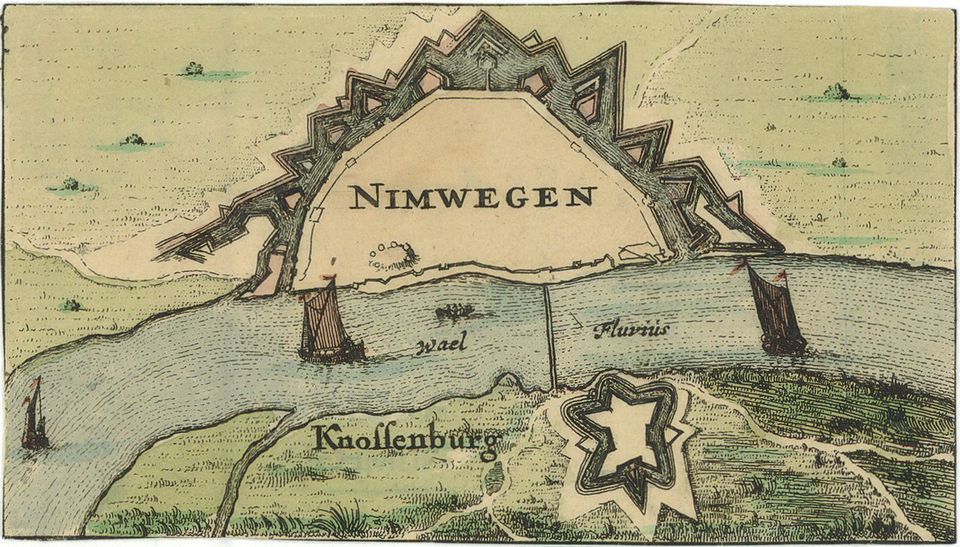History of the Treaties of Nijmegen
In 1672, a coalition consisting of England, France, Cologne and Münster invaded the Republic of the Seven United Netherlands. This ‘catastrophic year’ marked the end of the period of economic expansion. In 1675 the warring factions wished to select a city where a peace treaty could be signed to end the various wars raging throughout Europe. The English throne selected Nijmegen.
From 1676 to 1679, Nijmegen was the location of treaty negotiations. The term ‘Treaties of Peace of Nijmegen’ refers in an international context to a series of interrelated treaties ending the Franco-Dutch War, which were signed in Nijmegen in 1678 and 1679.
- 11 August 1678: the treaty between France and the Republic
- 17 September 1678, between France and Spain
- 5 February 1679, between France/Sweden and the Holy Roman Empire
- 19 March 1679, between Sweden and the Prince-Bishopric of Münster
- 2 October 1679, between Sweden and the Republic of the Netherlands
In the last quarter of the seventeenth century, Nijmegen was thus momentarily the political centre of Europe. The treaties ended a long period of conflict about the division of power and land in Europe and the peace is one of the defining moments in European history. At that time, Nijmegen was a small garrison town with a population of around 20,000. It was chosen to host the negotiations on account of its central location, situated on neutral territory.
The arrival of the delegations from the various European powers had a huge impact on the city. The ambassadors and their entourages were accommodated within the city walls. They were often very exacting about the places they stayed and where the negotiations took place; they were expected to reflect their eminent position and the status of the discussions. The well-to-do elite of Nijmegen made their houses available; artists from home and abroad came to the city to take advantage of the commissions to be had and even the municipal council made an effort.
Artefacts and pieces of art are still found in Nijmegen which date back to this extraordinary period in history. Museum Het Valkhof even has a special room where exquisite tapestries, the paintings of Gascard (a French court painter) and other artefacts are on display.
The Treaties of Peace of Nijmegen can be seen as one of the first forms of European agreement and cooperation. These peace treaties were one of the first attempts to achieve peace on a European scale. The most important lesson the Treaties of Nijmegen can teach us, is that discussion, dialogue and mutual respect can lead to European peace and tolerance. This is what inspired the City of Nijmegen, Radboud University Nijmegen and Royal Haskoning, together with the Ministry of Foreign Affairs to award a Treaties of Nijmegen Medal every two years. The Medal is awarded to a person or organization that has devoted special efforts towards achieving peace, prosperity and tolerance in Europe.
